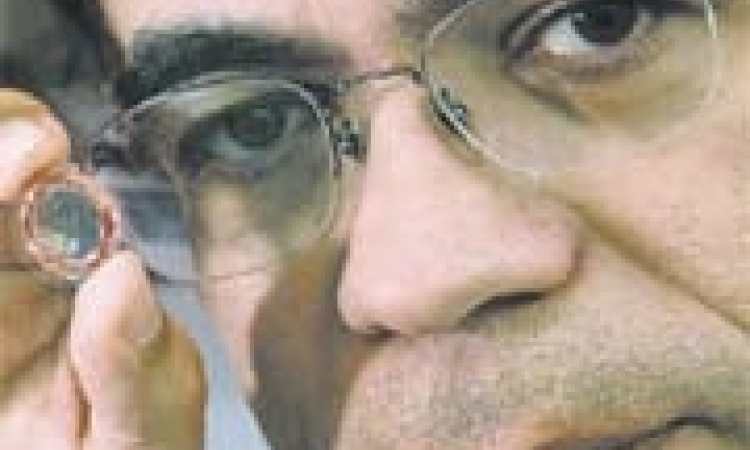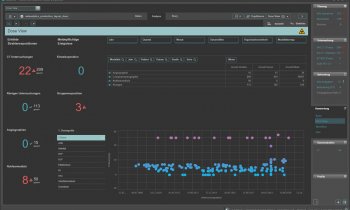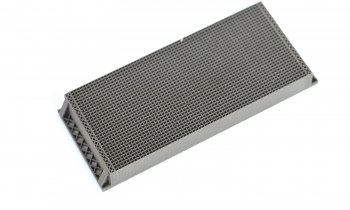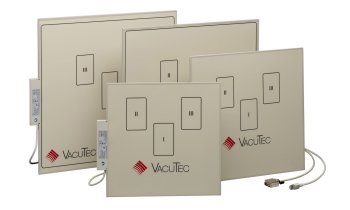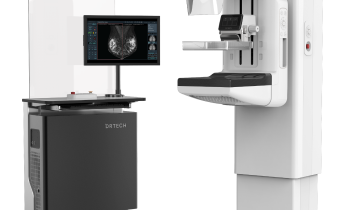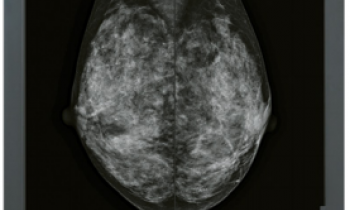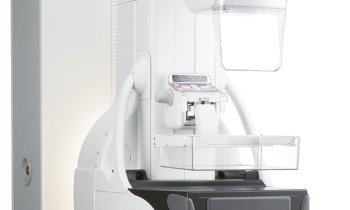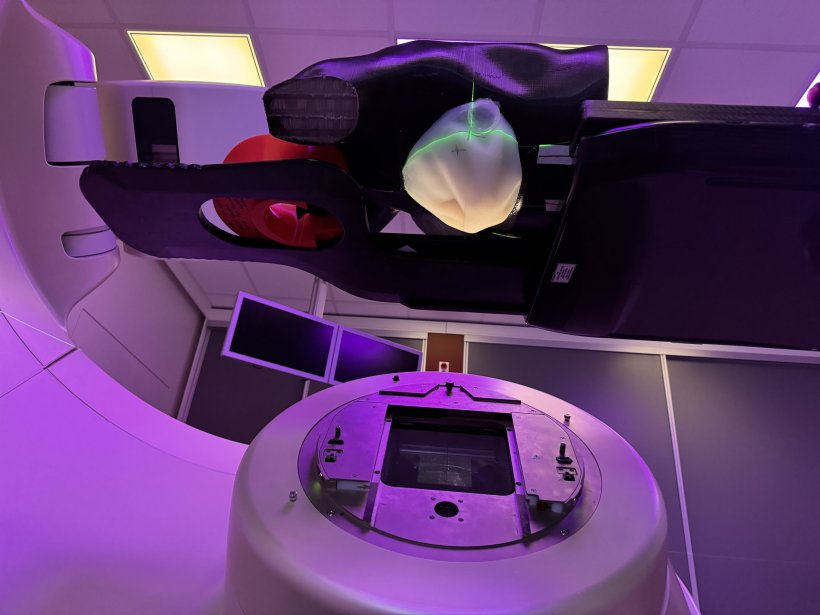
© HSHL/ GermanPhysics GmbH
Article • Patent for promising medical product
Breast cancer radiotherapy: new positioning system protects surrounding organs
Radiotherapy for breast cancer is always associated with the risk of damage to organs or surrounding tissue. A new positioning system, which has now been patented by the Hamm-Lippstadt University of Applied Sciences (HSHL), positions the breast far away from the upper body and thus increases the distance to the organs at risk. The medical device called "X-Akt Mamma RTX" is now set to be tested as part of a study and is expected to enter the market in 2025.
Article: Sonja Buske
Radiotherapy for breast cancer is usually carried out in the supine position. However, larger breasts in particular are sometimes placed sideways around the thorax, which means that parts of the heart and lungs are also exposed to radiation. In addition to direct side effects such as reddening of the skin, this can also have long-term consequences at cellular level, as medical physics expert (MPE) Christopher Stegmann explains: 'The lung seam can form necrosis and the coronary arteries can become porous. This can lead to shortness of breath, reduced exercise tolerance and even a heart attack. Although there are guidelines on how much dose an organ can receive, a compromise often has to be made in order to irradiate the tumour effectively.’
The challenging issue of patient positioning
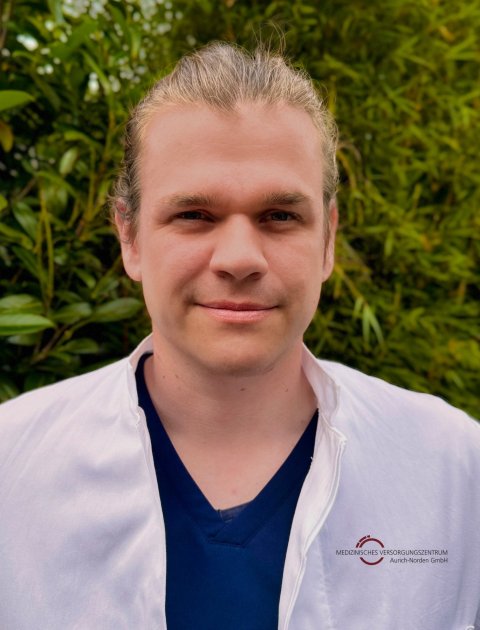
This fact irritated Stegmann, who currently works in radiotherapy at the MVZ Aurich-Norden, to the extent that he started looking for an alternative. Initial research revealed that all clinics appear to be facing the same problem. ‘Some facilities have patients lie on their side for radiotherapy, but then the table is positioned between the radiotherapy machine and the breast to be treated, which can severely damage the skin,’ the MPE realised. 'Some manufacturers offer solutions for radiotherapy in the prone position. However, these are all superstructures that are placed on the radiotherapy table and therefore severely restrict the degree of freedom of the accelerator.’ Other solutions involve complete tabletop systems, which are very expensive to purchase. ‘This is hardly feasible in everyday clinical practice and is therefore rarely used.’ In his opinion, a good approach involves respiratory gating systems, where radiation is only delivered when the patient is in the deep inspiration phase and the organs at risk in the thorax are as far away from the breast as possible. ‘The problem here, however, is that some patients can't hold their breath for as long as they would need to. As a result, radiation is then delivered without breath gating or, as a compromise, even at half inspiration, which cancels out what is actually a good idea,’ Stegmann explains the problem.
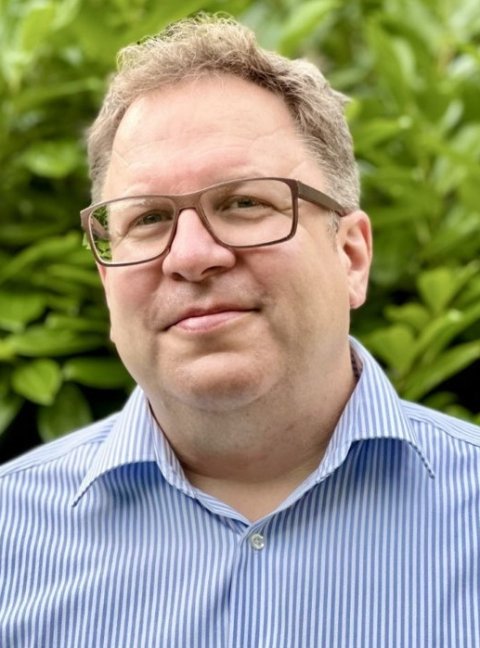
‘I was looking for a solution in which the patient would receive radiotherapy in the prone position, without having to do anything herself, and the product could be installed quickly and easily by the medical technicians.’ With his plans, he finally turned to the HSHL, where he had studied and now works as a lecturer for radiation protection classes. His proposal was well received by medical technician Prof Dr Jürgen Trzewik. ‘I was immediately enthusiastic about the idea,’ the expert recalls. ‘Our prototype laboratories and workshops provided the perfect environment for the project, so I immediately confirmed my support to Christopher Stegmann and worked with him to apply for funding, all of which was approved.’
A wooden prototype, followed by a carbon fibre model
The first prototype was made of wood in 2021, followed in April 2024 by the final version made of carbon fibre. It is attached to the existing irradiation table, which extends rather than raises it. ‘The challenges were high,’ explains Stegmann. The material must be permeable to radiation, cannot bend or break, and the system needs to be symmetrical so that it can be used for both breasts. The customer requirements analysis also revealed that it must not be too heavy and should be quick and easy to assemble. The latter is ensured by a snap-in double mechanism.
In order to convince the ethics committee of the function and effect of the X-Akt Mamma RTX, Stegmann and Trzewik's team developed a breast phantom from existing, anonymised data sets. As soon as the commission gives its approval, the study can start with a so-called 0 series of several radiotherapy sessions. "We hope that this will occur within this year," says Stegmann with confidence. Whether a series production will start with a partner from industry after the successful trial or whether the researchers will establish their own company has yet to be decided. At any rate, Stegmann hopes that every radiotherapy centre will be able to afford the new product and it will benefit as many women as possible.
Profiles:
Christopher Stegmann is employed as a Medical Physics Expert (MPE) at GermanPhysics GmbH since 2014 and works in radiotherapy at the MVZ Aurich-Norden. He studied Biomedical Technology and Applied Biomedical Engineering at Hamm-Lippstadt University of Applied Sciences (HSHL) and has MPE expertise in the fields of teletherapy, X-ray diagnostics and X-ray therapy. In 2022, he took over as Head of the Department of Medical Physics in Aurich. He is also a lecturer at the HSHL in the field of radiation protection.
Prof Dr Jürgen Trzewik is a graduate engineer in the field of physical engineering/medical technology and holds a professorship for medical technology at Hamm-Lippstadt University of Applied Sciences (HSHL) since 2011. He previously worked as a research and development engineer and in management in the industry.
01.09.2024



